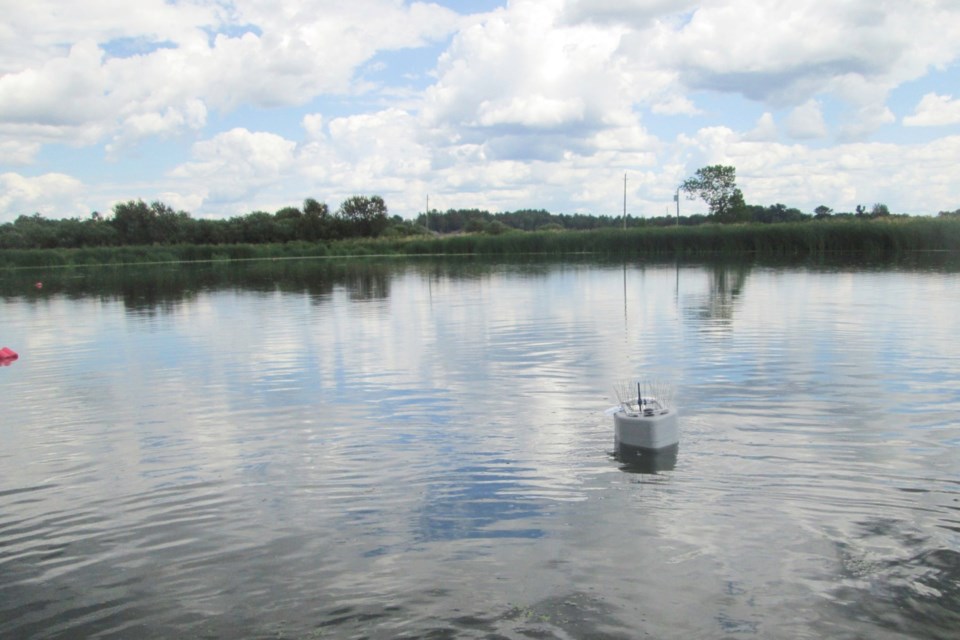Callander’s council recently received a new study from Dillon Consulting about the municipal sewage lagoons, and the conclusion is “the existing lagoons don’t need to be upgraded at this time.” In fact, given the “future flow rates as estimated,” Dillon Consulting expect “the lagoons will reach 80 per cent of their capacity by approximately 2036.”
Around that time, it might be time to start implementing some upgrades. Dillon Consulting mentioned that industry practice is to review lagoon capacity and plan for plant upgrades whenever 80 per cent capacity is reached.
How to upgrade a sewage lagoon? The report offers three suggestions for when the time comes. The best way to prolong the life of the lagoons is to make them bigger—dig them deeper or increase their footprint. However, both lagoons have a layer of bedrock not far below the sewage surface, which prevents further digging, and rock also prohibits expanding them in the open space in the north-west direction.
Digging for more capacity “is not considered a feasible option to implement,” the report concluded. However, reducing the inflow and infiltration of rainwater and groundwater would help extend the lagoons’ life.
See: A breath of fresh air for Callander’s sewage lagoons
The first Callander lagoon, “a single cell facultative lagoon” and sludge drying bed, was built in 1971. A second lagoon was added in 1988. These two operate in parallel and each are “discharged during two discharge periods in the spring and fall.”
Since 2017, about 968 meters cubed flows into the lagoon on an average day. Approximately 780 homes and businesses are currently serviced by municipal water and wastewater in Callander. The remaining homes and businesses use private wells and septic systems.
The municipality estimates an additional 100 lots will be developed—mostly in the Osprey Subdivision—over the next 10 to 15 years, and the lagoons can “accommodate future growth.” However, a review will be needed after those 15 years as capacity is estimated to reach 80 per cent by then.
Another suggestion Dillon Consulting offered was that instead of discharging lagoons twice a year, move to a continuous discharge system. The required “retention time” for liquids in a lagoon system is 30 days, the report explains, so discharging liquid more frequently will extend the lagoons’ use.
To do this, the lagoon system would have to be changed from operating in parallel to operating in series, and that would require relocating the inlet to the east side of the East Cell. Aeration would have to be added to that East Cell as well and would require “a small blower building” to be built.
Another treatment system for phosphorus removal would also be needed, as would effluent feed pumps. A UV disinfection system would help, and the outfall westward would have to be extended to complete the upgrade.
Converting the lagoons to continuously discharge will cost about $3,410,000. Once complete, the annual operating costs will fall between $50,000 and $100,000, the report suggests.
Increased aeration will extend the lagoons’ life, particularly if the municipality implements “fine bubble membrane diffusers attached to floating aeration chains” which move across the ponds. The method is common and widely used for lagoon aeration, and “does not require submerged aeration header piping or any other components to be installed, leveled, or secured on the basin floor,” so maintenance and cost are reduced.
See: Callander’s lagoons are for the birds you wish you could watch
Another option is to create a tertiary treatment system. For instance, the system could consist of “chemical coagulation to convert soluble phosphorus to particulate,” or adding a disc filter to remove suspended solids.
These are some of the options Callander’s council members can keep in mind while preparing for the future of the lagoons.
One option not recommended by Dillon Consulting is to construct a treatment plant. The report warns that constructing such facilities usually is at least twice as expensive as alternate options, particularly the conversion of the lagoons to continuous drainage lagoons.
David Briggs is a Local Journalism Initiative reporter who works out of BayToday, a publication of Village Media. The Local Journalism Initiative is funded by the Government of Canada.



